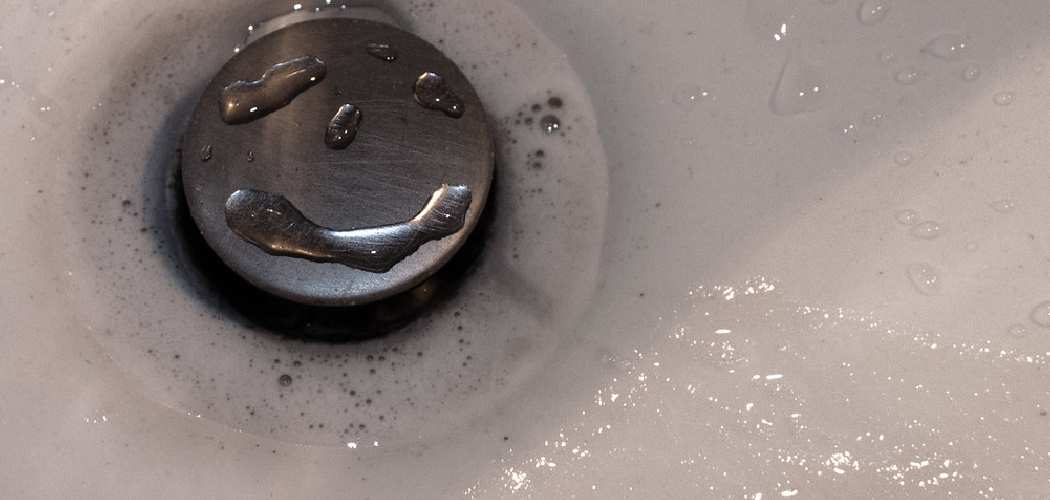Plugging a sink drain without a stopper can be a frustrating predicament, especially when you’re faced with the inconvenience of water continuously draining away. Whether you’ve misplaced the stopper or your sink simply doesn’t have one, finding alternative methods to block the drain becomes essential.
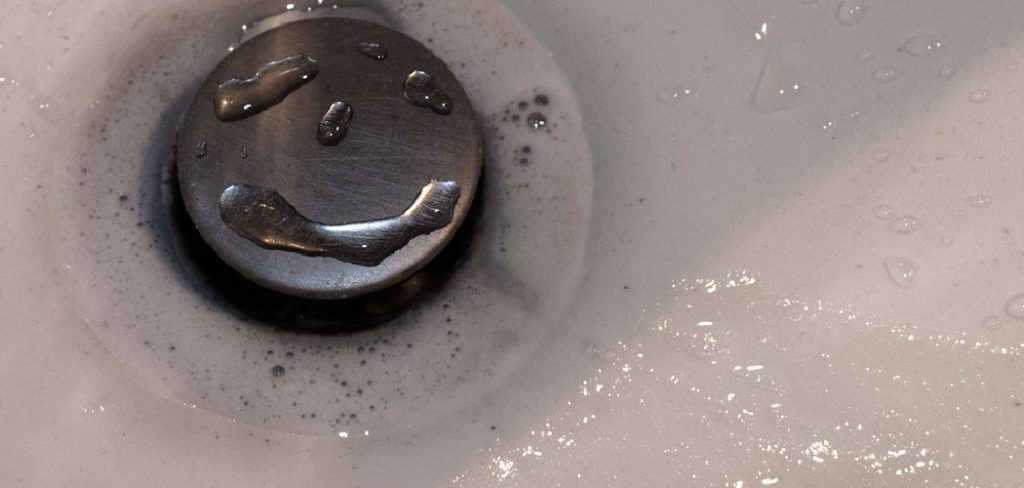
Fortunately, there are several creative solutions and household items that can serve as effective substitutes for a traditional stopper. From using common items found in your kitchen or bathroom to implementing DIY techniques, plugging a sink drain without a stopper is achievable with a bit of ingenuity and resourcefulness.
In this article, we’ll explore a variety of methods and tips for how to plug a sink drain without a stopper, allowing you to carry out tasks such as washing dishes or filling the sink without the hassle of water constantly flowing down the drain. Join us as we delve into the art of plugging a sink drain without a stopper and discover simple yet effective solutions to this common household dilemma.
Scenarios Where a Sink Stopper May Not Be Available
There are several instances where you might find yourself without a sink stopper, a situation that can be both inconvenient and annoying. One common scenario is moving into a new home or apartment only to discover that the stoppers are missing from the sinks. This is a frequent oversight during the chaos of packing and unpacking. Another situation could arise from the stopper being damaged or malfunctioning, rendering it useless until a replacement is found or purchased.
Additionally, while traveling and staying in accommodations such as hotels or rental homes, you might encounter sinks without stoppers, a minor detail that can easily be overlooked by the proprietors. For those who frequently engage in DIY projects or home improvements, the stopper may be temporarily removed and misplaced. Understanding these scenarios highlights the importance of knowing alternative methods to plug a sink effectively.
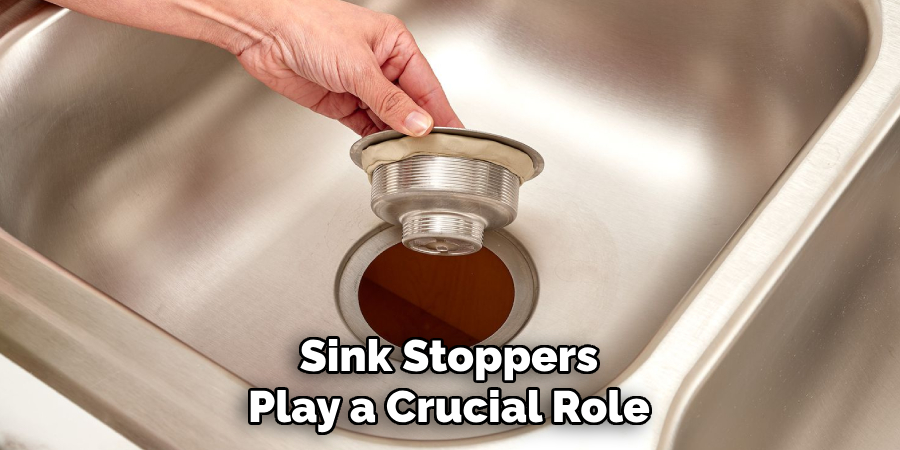
Understanding the Role of Sink Stoppers
Sink stoppers play a crucial role in household functionality, impacting tasks ranging from daily hygiene routines to kitchen cleanliness. Essentially, these stoppers allow for the control of water within the basin, facilitating activities that require a filled sink, such as washing dishes, soaking laundry, or even engaging in water-based DIY projects.
The ability to seal the drain means that rather than water flowing away immediately, one can manipulate the sink to hold water for an extended period, which is essential for many chores and tasks. Additionally, sink stoppers act as a first line of defense against object loss down the drain, preventing small items like rings or earrings from accidentally slipping into the plumbing system.
Appreciating the importance of sink stoppers can heighten our understanding of the inconvenience posed when one is missing and underscore the need for alternative plugging methods.
Exceptional Methods for Plugging a Sink Without a Stopper
When faced with a sink without a stopper, you may wonder how to solve this dilemma with everyday items at your disposal. Here are some innovative and reliable methods to temporarily plug your sink:
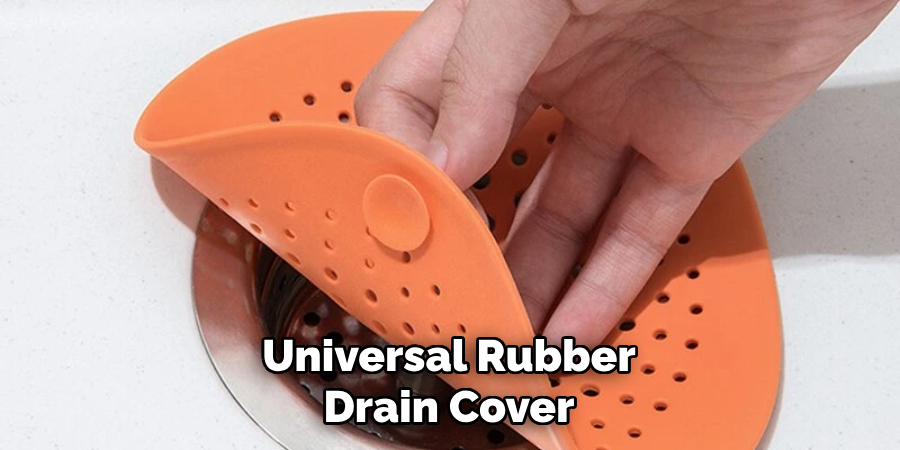
- Plastic Wrap or Aluminum Foil: One of the easiest and most accessible methods involves using a substantial amount of plastic wrap or aluminum foil. By pressing a layered sheet of either material into the drain and molding it around the sink’s base, you create a makeshift barrier. This solution is particularly useful for tasks that don’t require long-term water retention.
- Rubber Drain Cover: A universal rubber drain cover, often found in home improvement or plumbing supply stores, can serve as a versatile stopper for various sizes of sink drains. Its flexibility allows it to seal the drain effectively, and its size makes it a handy tool for both travel and home use.
- A Small Saucer or Plastic Lid: In instances where the drain’s diameter permits, a small saucer or a sturdy plastic lid can act as a temporary stopper. To ensure a watertight seal, it’s essential to place a heavy object on top of the saucer or lid, pressing it firmly against the drain.
- Cup Plunger: While traditionally used to clear clogged drains, a clean cup plunger can also function as an impromptu sink stopper. By inverting the plunger over the drain and pressing down to create suction, you can effectively seal the sink for short durations.
Implementing these alternative methods to plug a sink can alleviate the frustration of missing sink stoppers, allowing for uninterrupted kitchen and bathroom activities. Each approach provides a different level of efficacy and permanence, catering to various needs and scenarios encountered in daily life.
Common Types of Sink Stoppers
Understanding the diversity among sink stoppers can provide insight into why one might go missing and how to choose the best replacement or temporary solution. There are several common types of sink stoppers, each with its unique mechanism and application:
- Rubber Stopper: A simple and universal type, the rubber stopper is a flexible piece that fits snugly into the drain. It’s straightforward, affordable, and effective for creating a water-tight seal.
- Pop-Up Stopper: Commonly found in bathroom sinks, pop-up stoppers are operated by a rod connected to the faucet. Lifting or pressing this rod allows the stopper to move up or down, sealing or opening the drain.
- Flip-Top Stopper: As the name suggests, flip-top stoppers rotate on a pivot to open or close the drain. These are often seen in more modern or updated bathroom designs.
- Push and Seal Stopper: This type operates by simply pushing it down to seal and pushing again to open. They offer a seamless look and are increasingly popular for their ease of use.
- Basket Strainer: A basket strainer functions as both a stopper and a filter, preventing large debris from entering the drain while allowing water to pass through. They’re most commonly used in kitchen sinks.
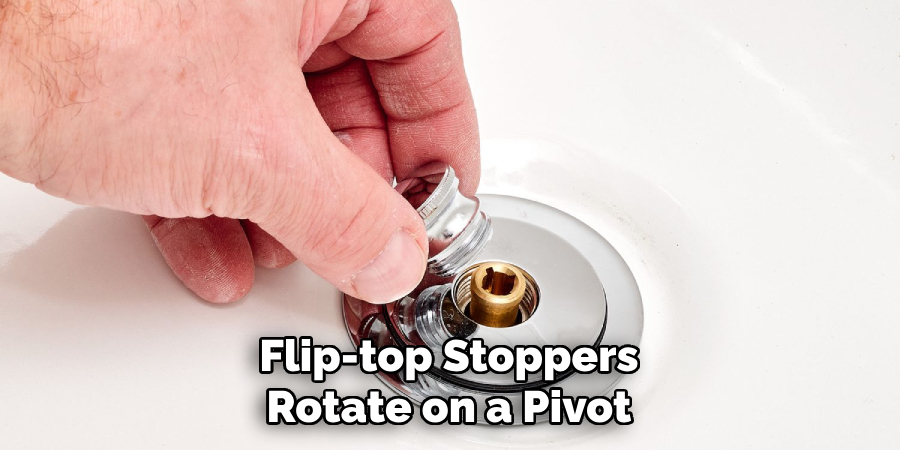
Each type of sink stopper serves the purpose of controlling water flow and preventing foreign objects from entering the plumbing system. However, due to their mechanisms, sizes, and materials, knowing which type your sink uses can facilitate finding a quick alternative or replacement when needed.
Challenges Faced with Missing or Broken Stoppers
Encountering a missing or broken sink stopper presents various challenges that can disrupt daily routines and tasks. One of the most immediate issues is the inability to hold water in the sink, which complicates simple activities such as hand-washing delicate items, soaking dishes, or even routine grooming practices like shaving. This limitation not only affects the efficiency of these tasks but also can lead to increased water usage, as tasks that usually require a filled sink now need a continuous flow of water.
Furthermore, a missing or faulty stopper exposes the drain to potential clogging hazards. Without a stopper to catch debris, unwanted materials can easily enter the plumbing system, leading to clogs that can be costly and time-consuming to fix. This risk is particularly high in kitchen sinks, where food particles and other residues are more likely to go down the drain.
For individuals who value aesthetics and function in their living spaces, a missing or broken stopper can also be an eyesore, detracting from the overall look of the sink and bathroom or kitchen area. It can convey a sense of neglect or disrepair, affecting the ambiance of the space.
Lastly, the inconvenience of a non-functional sink can lead to makeshift solutions that may not be as effective or hygienic. Relying on temporary fixes can be frustrating and serve as a constant reminder of the need for a more permanent solution, adding to the day-to-day challenges of household management.
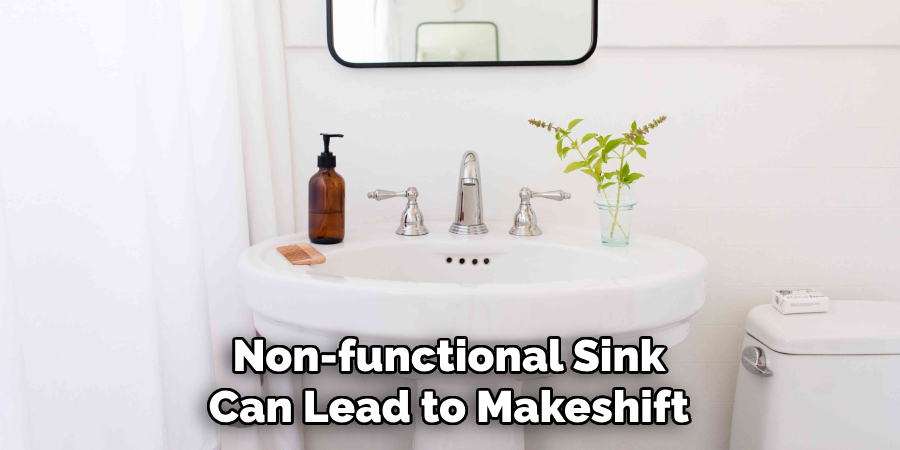
Reasons for Plugging a Sink Drain Without a Stopper
There are several compelling reasons why one might seek to plug a sink drain in the absence of a traditional stopper, each reflecting the diverse needs and emergencies one might face in a household or commercial setting:
- Water Conservation: In efforts to reduce water usage, plugging the drain allows for the accumulation of water in the basin, minimizing the need for a continuous flow. This practice is especially beneficial in regions or situations where water conservation is crucial.
- Cleaning and Maintenance: Plugging the sink makes tasks like cleaning small items, soaking stained clothing, or even filling the basin with a cleaning solution for an overnight soak much easier. Without the ability to hold water, these tasks become more cumbersome and less efficient.
- Safety Measures: In homes with small children or pets, a plugged sink can prevent toys, small tools, and other hazardous items from accidentally being flushed down the drain, posing both a safety risk to the child or pet and the potential for plumbing complications.
- Inconvenience Avoidance: Losing small, valuable items down the drain is a concern in any household. Earrings, rings, and small screws can quickly and unintentionally slip out of hands. Plugging the sink when not in use or during tasks that involve handling small components can serve as a preventative measure.
- Emergency Situations: In instances of plumbing failures where water cannot be properly shut off, plugging the sink can serve as a temporary measure to prevent overflow and water damage until professional help can be obtained.
Temporary Solutions for Clogged Drains
When faced with a clogged drain, be it in the kitchen, bathroom, or any utility area, finding an immediate and effective temporary solution can alleviate stress and prevent potential water damage. Here are some tried and tested methods:
- Boiling Water: Often, the simplest solution is the best place to start. Boiling water can help dissolve organic matter or soap that’s causing the blockage. It’s an easy first step before moving on to more complex solutions.
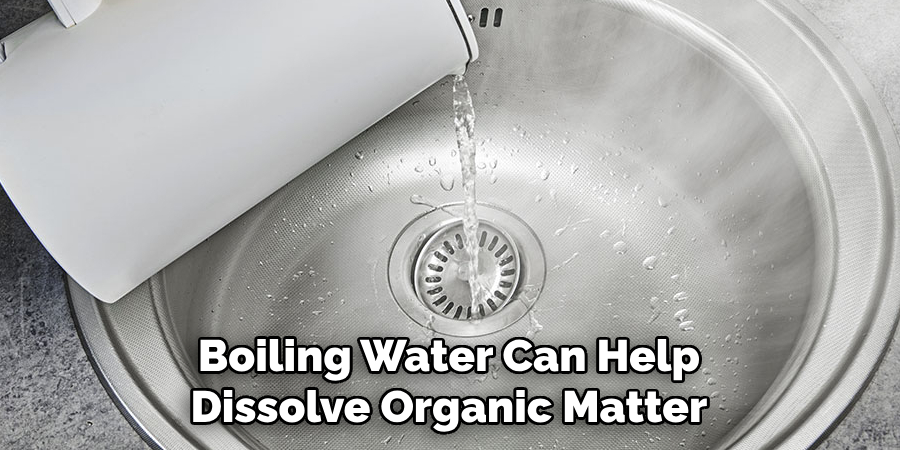
- Baking Soda and Vinegar: A popular natural remedy involves pouring a pot of boiling water down the drain, followed by half a cup of baking soda and half a cup of vinegar. Cover the drain with a plug or cloth for about ten minutes and then flush it with more boiling water. The chemical reaction can help break down the clog without the need for harsh chemicals.
- Plunger: A plunger can be used to create pressure that dislodges the clog. Ensure you have a good seal around the drain and use vigorous plunging motions to attempt to clear the blockage. For sinks, use a flat-bottomed plunger rather than the flanged kind designed for toilets.
- Wet/Dry Vacuum: If available, a wet/dry vacuum can be set to liquid mode to attempt to suck out the clog. Make sure to create a tight seal around the drain and cover overflow outlets beforehand to increase suction.
- Plumbing Snake or Wire Hanger: A flexible plumbing snake can reach deep into the drain to break apart or retrieve whatever is causing the clog. A straightened wire hanger can serve as a DIY alternative, though it might not reach as far.
10 Methods How to Plug a Sink Drain without a Stopper
1. Using a Rubber Glove or Balloon:
If you find yourself without a sink stopper, one quick solution is to use a rubber glove or balloon. Simply inflate the balloon or insert your hand into the glove, then place it over the drain opening, ensuring a tight seal. This makeshift stopper will prevent water from draining while you complete your task.
2. Employing Duct Tape or Plastic Wrap:
Another option is to use duct tape or plastic wrap to create a temporary seal over the sink drain. Cut a piece of duct tape or plastic wrap larger than the drain opening, then firmly press it down to cover the hole. Make sure to smooth out any wrinkles or air bubbles to create a watertight seal.
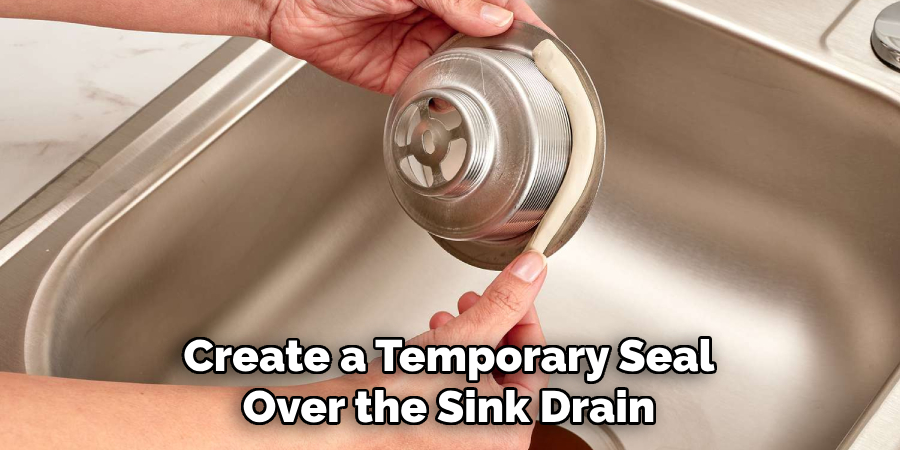
3. Utilizing a Bowl or Container:
Grab a bowl or container that is large enough to cover the sink drain opening. Place the bowl upside down over the drain, ensuring that it completely covers the hole. The weight of the bowl will keep it in place and prevent water from escaping down the drain.
4. Improvising with a Cloth or Rag:
If you have a cloth or rag on hand, fold it several times to create a thick layer, then place it over the sink drain. Press down firmly to ensure a snug fit and prevent any water from seeping through. This makeshift stopper is effective and easy to create with items you likely already have at home.
5. Employing a Sink Strainer or Mesh Screen:
If you have a sink strainer or mesh screen available, use it to cover the drain opening. These accessories are designed to catch debris and can also serve as temporary stoppers. Make sure the strainer or screen fits securely over the drain to prevent water from escaping.
6. Sealing with Silicone Caulk or Putty:
For a more permanent solution, consider using silicone caulk or putty to seal the sink drain temporarily. Apply a generous amount of caulk or putty around the edges of the drain opening, smoothing it out with your finger to create a watertight seal. Allow it to dry completely before using the sink.
7. Improvising with a Plastic Bag:
If you don’t have any other options available, a plastic bag can also be used to plug the sink drain. Place the bag over the drain opening, ensuring that it covers the hole completely. Press down firmly around the edges to create a tight seal and prevent water from escaping.
8. Using a Rubber Stopper from Another Container:
Look for a rubber stopper from another container, such as a water bottle or storage jar, that fits snugly over the sink drain. Place the stopper over the drain opening and press down firmly to create a seal. This makeshift solution can effectively prevent water from draining until you find a more permanent fix.
9. Employing a Wooden Block:
If you have a small wooden block or wedge available, you can use it to plug the sink drain temporarily. Place the block over the drain opening, ensuring that it covers the hole completely. Press down firmly to create a seal and prevent any water from escaping down the drain.
10. Exploring Commercial Drain Plugs or Covers:
Consider purchasing a commercial drain plug or cover as a more permanent solution to plug the sink drain. These products are designed specifically for this purpose and come in various sizes and styles to fit different types of drains. Simply place the plug or cover over the drain opening and follow the manufacturer’s instructions for securing it in place.
Conclusion
When faced with a sink drain without a stopper, there are several resourceful solutions you can employ to prevent water from draining. Whether you choose to use household items like rubber gloves or plastic bags, or invest in commercial drain plugs, these methods will help you quickly and effectively plug the sink drain until a more permanent solution can be found. Thanks for reading, and we hope this has given you some inspiration on how to plug a sink drain without a stopper!

